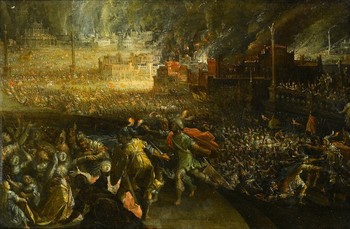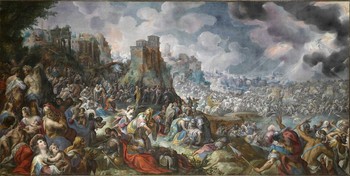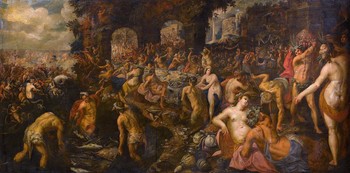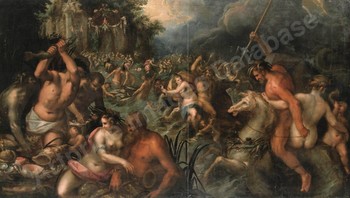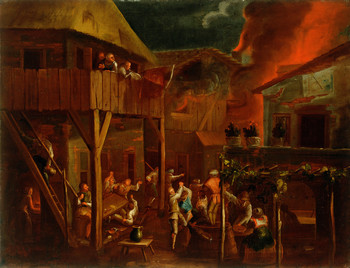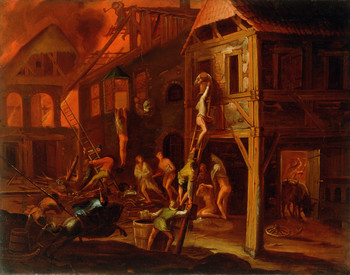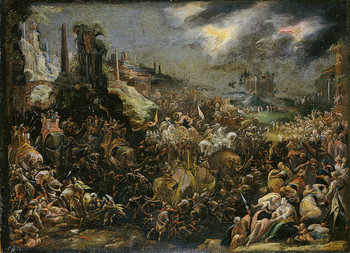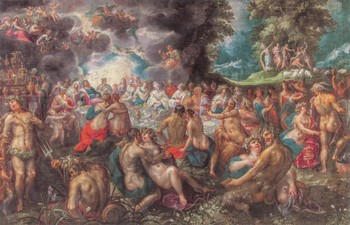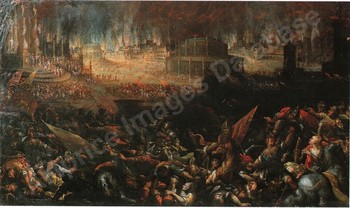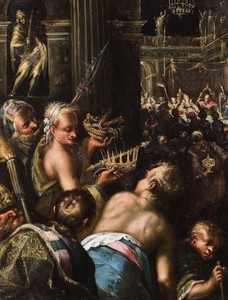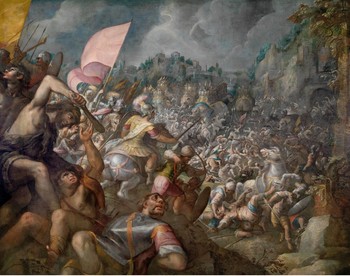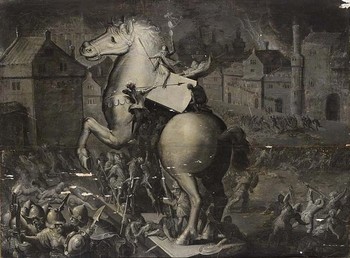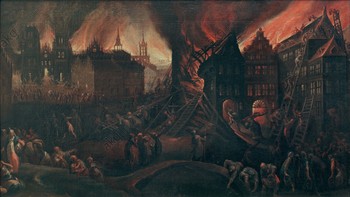Frederick van Valckenborch
The burning city
Oil on canvas : 52 X 91 cm
Monogrammed and dated left of the centre “FVV / 1607”
Prague, National Gallery
This is a comparative item
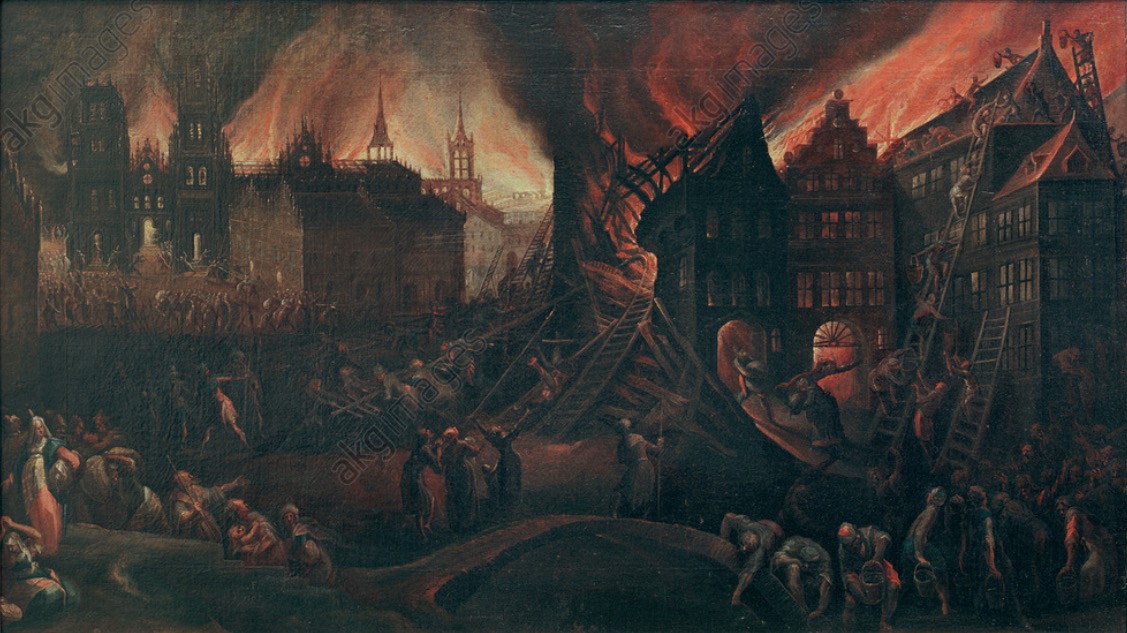
Painting for Sale
In short
Antwerp-born Gillis van Valckenborch was an important painter in Frankfurt. He specialized in Late Mannerist, often large representations of subjects of Classical Antiquity. Very few signed works are known by him.
Our painting represents the Fall of Troy: at right in the background the statue of the infamous horse, where the Greek soldiers who opened the gates of the town for their compatriots were hiding in; in the left foreground Aeneas who is going to flee successfully and who will become a forefather of the Romans.
About Gillis I van Valckenborch
Flemish painter who was mostly active in Germany
Antwerp 1570 – 1622 Frankfurt
History painter of Biblical, Classical and mythological subjects.
Pupil of his elder brother Fredrick I.
Gillis I belonged to a highly important family of Flemish landscape painters who, because of their Calvinist sympathies, fled from Antwerp to present-day Germany.
- His father was Marten I (1534 – 1612) and his uncle was Lucas (1535/36 – 1597) van Valckenborch.
- His older brother was Frederick I (1566 – 1623); his sister Helena Heilwich married with the perspective painter Hendrick van Steenwijck II.
As a result of the general Protestant sympathy all major Flemish and Dutch towns had Calvinist city councils between circa 1577 and 1585 that participated with the so-called Dutch Revolt. The profoundly Catholic Spanish government that reigned over the Low Countries fought successfully back and was able to conquer town after town in Flanders. Following the Fall of Antwerp in August 1585 more than half of its 100.000 inhabitants left the city. Most of these Protestants fled to Holland, but Marten I van Valckenborch settled with his family in Frankfurt.
Our Gillis I van Valckenborch stayed since his arrival in Frankfort in 1586 all his life there, except for a presumed trip to Rome with his brother Frederick I circa 1590/91.
About the subject of our painting
Both Homer in his ‘Odysssey’ and the Roman author Virgil in his ‘Aeneid’ describe how the War of Troy ended with the fall of the town thanks to a ruse: the Wooden Horse.
Having tried in vain for ten years to take Troy, the Greek hero Ulysses had a huge hollow statue of a wooden horse build, in which Greek soldiers were hidden. The Trojans thought the Greek had left for home, but the entire fleet was hiding behind the island of Tenedos. The Trojans pulled the statue to the temple of Athena inside town and then celebrated the end of the siege.
In the second part of the night the Greek soldiers emerged from the horse and they opened the undefended city gates to the rest of the Greek army … The town was finally taken by ruse after a siege that had lasted for ten long years. The city was completely destroyed, its inhabitants either killed or enslaved.
In the right background we see the huge statue of the wooden horse.
In the foreground Aeneas, forefather of Romulus and Remus, and of Julius Caesar, is fleeing Troy. He is carrying his father Anchises on his shoulders, his son Ascanius is running in front of him. Ascanius is carrying the penates, the household deities. The half-naked woman lying in front them is Aeneas’s wife, Creusa, the daughter of King Priam of Troy. She has been killed by the Greek attackers.
Why should you buy this painting?
Because this finely detailed, typical late Mannerist painting on copper is one of the rare signed works by Gillis I van Valckenborch.
Comparative paintings
Click photos for more details

